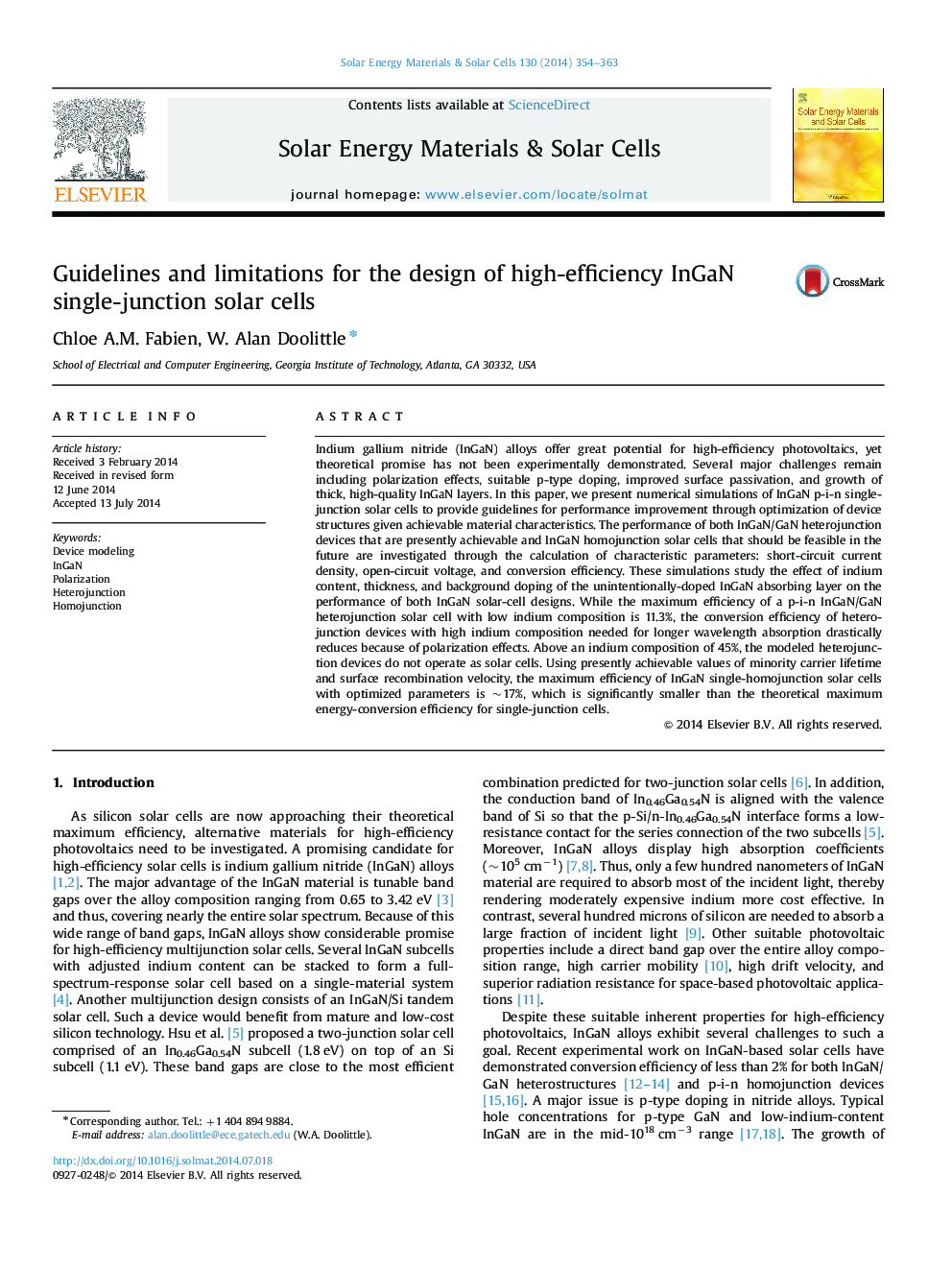| کد مقاله | کد نشریه | سال انتشار | مقاله انگلیسی | نسخه تمام متن |
|---|---|---|---|---|
| 6535583 | 49301 | 2014 | 10 صفحه PDF | دانلود رایگان |
عنوان انگلیسی مقاله ISI
Guidelines and limitations for the design of high-efficiency InGaN single-junction solar cells
دانلود مقاله + سفارش ترجمه
دانلود مقاله ISI انگلیسی
رایگان برای ایرانیان
کلمات کلیدی
موضوعات مرتبط
مهندسی و علوم پایه
مهندسی شیمی
کاتالیزور
پیش نمایش صفحه اول مقاله

چکیده انگلیسی
Indium gallium nitride (InGaN) alloys offer great potential for high-efficiency photovoltaics, yet theoretical promise has not been experimentally demonstrated. Several major challenges remain including polarization effects, suitable p-type doping, improved surface passivation, and growth of thick, high-quality InGaN layers. In this paper, we present numerical simulations of InGaN p-i-n single-junction solar cells to provide guidelines for performance improvement through optimization of device structures given achievable material characteristics. The performance of both InGaN/GaN heterojunction devices that are presently achievable and InGaN homojunction solar cells that should be feasible in the future are investigated through the calculation of characteristic parameters: short-circuit current density, open-circuit voltage, and conversion efficiency. These simulations study the effect of indium content, thickness, and background doping of the unintentionally-doped InGaN absorbing layer on the performance of both InGaN solar-cell designs. While the maximum efficiency of a p-i-n InGaN/GaN heterojunction solar cell with low indium composition is 11.3%, the conversion efficiency of heterojunction devices with high indium composition needed for longer wavelength absorption drastically reduces because of polarization effects. Above an indium composition of 45%, the modeled heterojunction devices do not operate as solar cells. Using presently achievable values of minority carrier lifetime and surface recombination velocity, the maximum efficiency of InGaN single-homojunction solar cells with optimized parameters is ~17%, which is significantly smaller than the theoretical maximum energy-conversion efficiency for single-junction cells.
ناشر
Database: Elsevier - ScienceDirect (ساینس دایرکت)
Journal: Solar Energy Materials and Solar Cells - Volume 130, November 2014, Pages 354-363
Journal: Solar Energy Materials and Solar Cells - Volume 130, November 2014, Pages 354-363
نویسندگان
Chloe A.M. Fabien, W. Alan Doolittle,